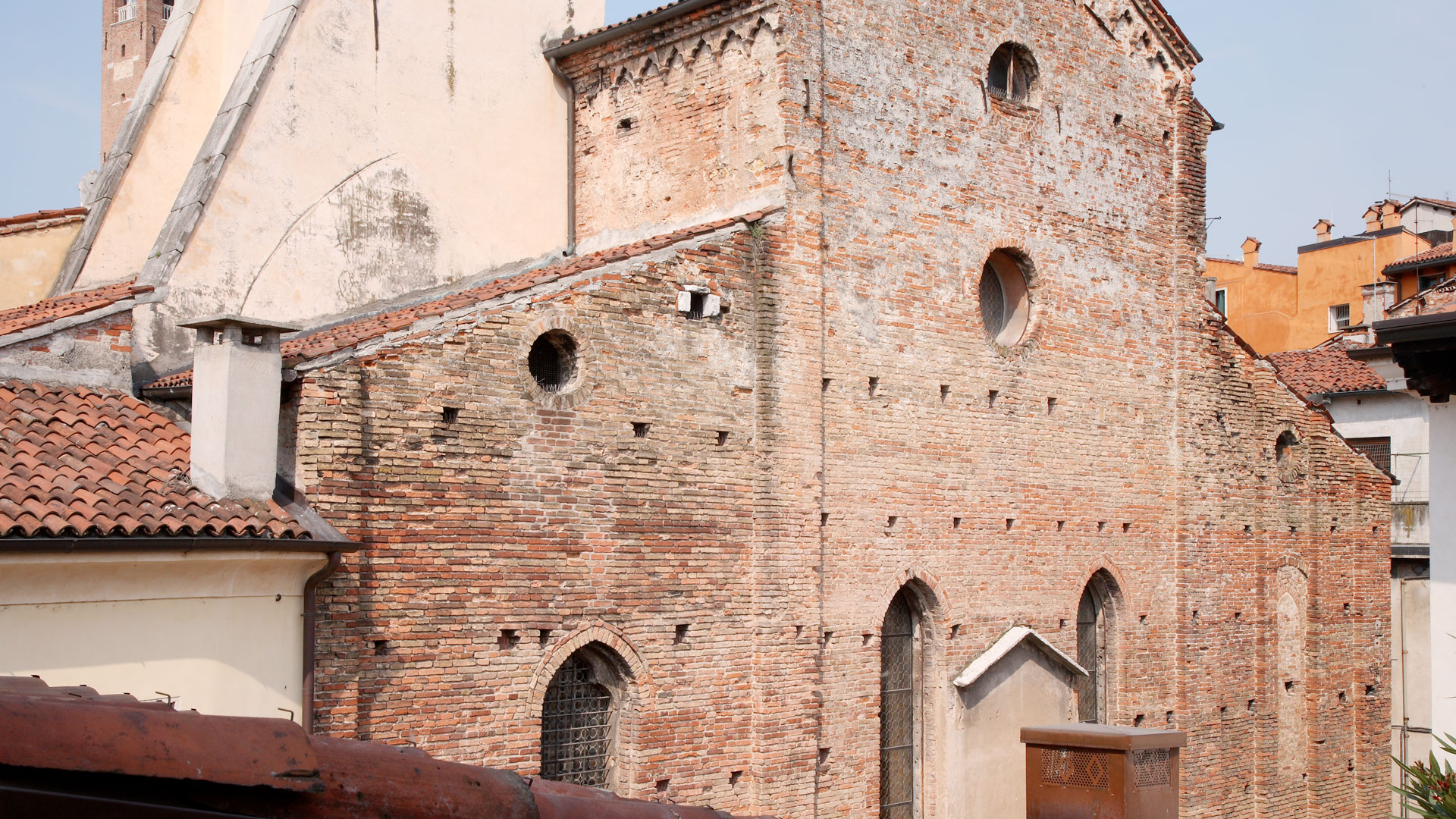Hotel Palladio is a graft of contemporary architecture and design, , in the heart of Vicenza
…a few steps from the Palladian Basilica, Piazza dei Signori and the city’s major points of interest.
Essential charm and understated elegance define the unmistakable style of the Hotel Palladio, respectfully and gracefully integrated into the historical-architectural fabric of the city, on the site where the 15th-century Torre dei Dazi once stood, some ethereal traces of which can still be perceived.
Comfortable, reserved, modern, original, enriched by site-specific contemporary art pieces, with its 22 rooms including two junior suites the Hotel Palladio is a classy and distinguished address in the range of Vicenza hospitality.
Imagine a place where the rules are not the same, where space and time mingle to draw a new philosophy of hospitality.
Our refined hotel is located right in the heart of the city of Palladio, about 5 minutes walking far from the Basilica Palladiana, the Palazzo Chiericati picture gallery and from the Olympic Theatre. Besides, it is only fifteen minutes walking from the town’s station.
Due to its location, our hotel is the ideal place for those who want to admire the architectural beauties of a fascinating city, rich in history and culture, but also capable of offering interesting proposals for shopping lovers.
Moreover, this is one of the few four star hotels in Vicenza.
Our Hotel was an ancient customs port house for Vicenza and the building is from the XV century. Hotel Palladio was specifically designed through-out leaving some original aspects which makes us unique.
Hotel Palladio was born in 2008 from the regeneration of the premises of an old inn built on the site of the ancient Torre dei Dazi.
The essential and contemporary style of the interior is particularly attentive to balance, hospitality and comfort.
In the philosophy that has guided the design choices of the refurbishment like a guiding star, innovative solutions coexist with a marked sensitivity for history and the recovery of materials.
The blending of past and future is perceptible in every detail of the hotel. The modern and linear lobby sports on one of the walls the large rectangle of black material signed by the artist Grazia Fortuna Word, while the ceiling lined with the original ancient larch beams, perfectly recovered, is embellished by the aerial installation by the sculptor Paola Paganelli.
The imposing colored raw earth radiant slabs, bordered by a fine brass profile, present themselves as further iconic epicentre of the interior: they are functional elements with a custom-made design, conceived and manufactured exclusively for Hotel Palladio.
As great material-chromatic works, these absolutely original heating and cooling systems are considered healthier and more natural than common air conditioning, and for these characteristics they have been installed in each of the hotel rooms.
The same circular logic can be found in the flower vases made from industrial processing waste encased in paraffin, as well as in the courtesy cards in the rooms. The cosmetics and soaps used in the hotel are natural and organic products of the Venetian cooperative Rio Terà dei pensieri, created following an old herbalist recipe book and using natural and organic raw materials cultivated in the ancient “Orto delle Meraviglie”. The garden is located inside the Convent of the Convertite at Giudecca, which now houses the Women’s Prison. It is they who tend the plants used in the cosmetics by hand, as part of a recovery and work training project.

Vicenza
Lying along the landscape axis from Verona to Venice via Padua, Vicenza is a city of Roman origin: the urban layout is perfectly intact in the cardo of Contra’ Porti that crosses the decumanus of Corso Palladio. A patrician city long disputed by Verona and Padua, during the Renaissance it became one of the most illustrious economic and cultural centre of the Venetian Republic, especially thanks to the prestige of Andrea Palladio’s architectural works. Since 1994, Vicenza has been a UNESCO World Cultural Heritage Site for its historic centre and 21 Palladian villas scattered throughout its territory.
